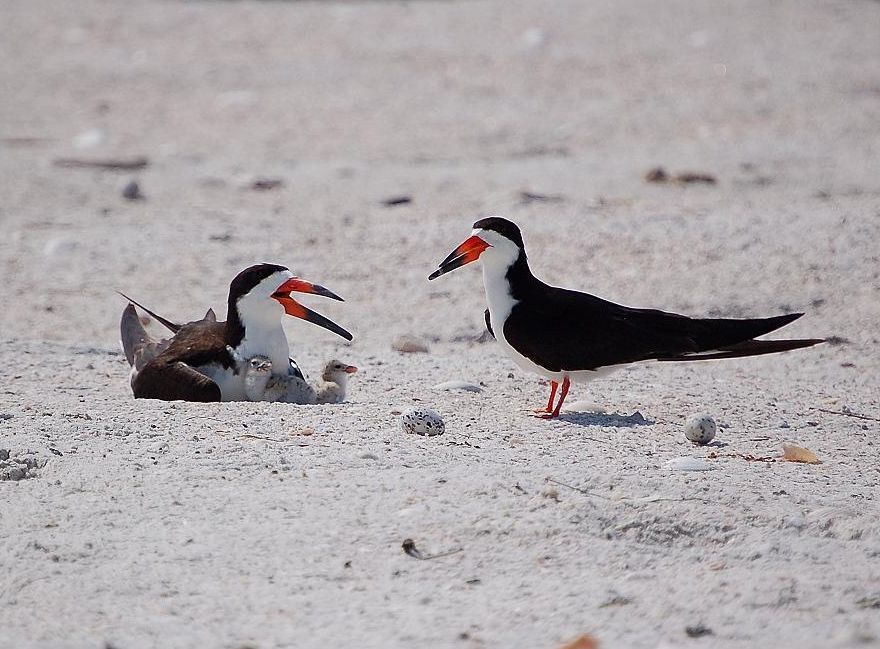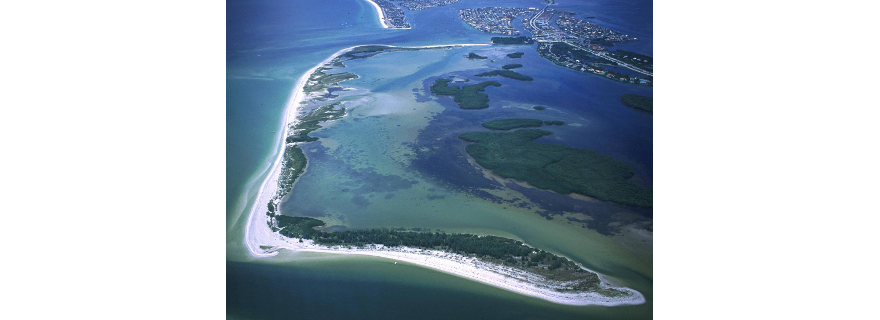Steady increases in weekend and holiday boating traffic at Shell Key have prompted proposals for new rules that would ban alcohol and dogs at the Pinellas County preserve. The recommendations are part of a revised management plan released for public comment at the end of July.
Located west of Tierra Verde near the mouth of Tampa Bay, the 2.6-mile barrier island is a popular destination for boaters. Busy spring and summer weekends bring as many as 3,000 people to the preserve, which is recognized as one of the state’s most important areas for beach-nesting birds.
The increase in crowds poses a number of safety and environmental concerns. As traffic has escalated, so have the party crowds. While alcohol is prohibited on the island, beer-toting revelers elude enforcement by stepping into the water when they see a deputy approach.
“It’s kind of like Gasparilla on the water,” says Sgt. Glenn Wilson, of the party boats that converge on the northeast end of the island. Wilson is part of a 10-person environmental lands unit responsible for patrolling county preserves including Shell Key, Weedon Island and Brooker Creek. Along with ensuring public safety, the special team also enforces rules established for environmental protection.
At Shell Key, that includes keeping people and dogs out of areas reserved for nesting birds. But despite signs designating these areas as off limits to beachgoers, infractions are common. “People aren’t abiding by the rules,” says Pam Leasure, Pinellas County’s environmental lands manager for south Pinellas. “You rarely see a dog on a leash out there.”
In 2006, sheriff’s deputies made six felony and 102 misdemeanor arrests at Shell Key, and issued 186 citations for ordinance violations. Already strained in its enforcement capacity, the unit is bracing for deep cutbacks as the county grapples with budget constraints in the wake of a legislative mandate to roll back property taxes. Budget cuts will shrink the 10-member environmental lands unit to just two officers beginning October 1.
The drastic reduction in force has alarmed many environmental activists who have been fighting for a stronger management plan. “If we lose these deputies, Shell Key will become the ultimate party destination,” says Lorraine Margeson of St. Petersburg. “We will never have a beach nesting bird again.”
While nesting success varies each season, it’s been an especially bad year for beach nesting birds, according to Pinellas County researcher Steven Harper. Harper has been monitoring species, including the black skimmer (Rynchops niger), least tern (Sternula antillarum), American oystercatcher (Haematopus palliatus), Wilson’s plover (Charadrius wilsonia), and willet (Catoprophorus semipalmatus), since 2000.

A group of skimmers attempted to nest on the northeast tip of the island, where boaters congregate, but the colony quickly failed. Nesting attempts by oystercatchers also failed to produce fledglings, and other species were absent altogether. “This is the first year I know of that we haven’t had a colony of least terns even attempt to breed,” says Harper.
While human activity almost certainly was a factor in this year’s decline, Harper cautions against drawing broad conclusions in the absence of data.
The eggs and chicks of beach-nesting birds are easy prey for raccoons, gulls and hawks. The low-lying nests also are vulnerable to storms and flooding. While those factors are outside their control, county officials say banning dogs on the preserve will relieve pressure on the birds. Dogs can cause an adult bird to abandon its nest, leaving eggs exposed to the sun and hungry predators.
Not everyone welcomes the new restrictions. Dave Reynard, who has been visiting Shell Key for decades, says the problems have been overblown. “Recreational boaters are not destructive people,” he says. “If law enforcement gets cut back, this would be the time for the county to work with us rather than shoot us in the foot.”
Reynard represented recreational boaters on a committee that helped formulate the preserve’s inaugural management plan in 2000.
Leasure says the plan reflected a compromise in the hopes that boaters would police themselves. “But word got around, and as other barrier islands began limiting people, there’s been a build up on Shell Key,” she says.
Reynard says that’s the problem. “If we open up some of these other areas, there wouldn’t be such a big crowd at Shell Key,” he says.
“It’s what little wilderness we boaters have left to go to.”
[su_tooltip][su_button]Public comment on the revised management plan is being accepted via email through August at shellkeypreserve@pinellascounty.org. The Shell Key Advisory Group will hold a public meeting to discuss the plan on August 29, 2007 from 6:30 to 8:30 p.m. at the Pinellas County Extension Auditorium, 12520 Ulmerton Road in Largo. County commissioners are expected to adopt a revised plan on October 2. The management plan is available online at www.pinellascounty.org/shellkey. [/su_button][/su_tooltip]
Article originally published Summer 2007.
[su_divider]